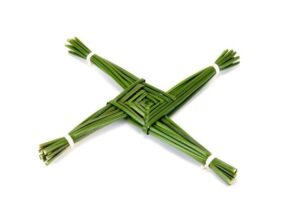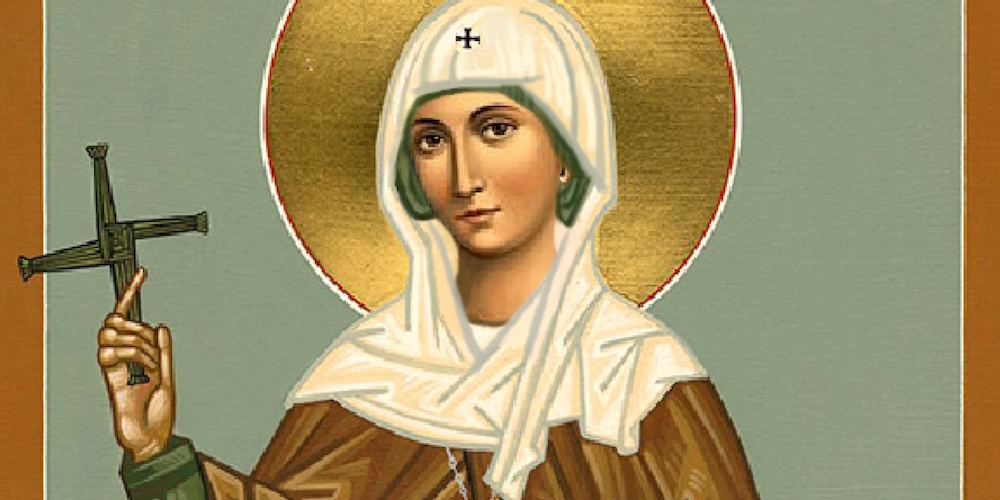Saint Brigid of Kildare or Brigid of Ireland (Irish: Naomh Bríd; Latin: Brigida; c. 451 – 525) is the patroness saint of Ireland, and one of its three national saints along with Patrick and Columba.
According to medieval Irish histories of the saints, St. Brigid was born at Fochart (or Fothairt), near Dundalk in Co Louth. She became an abbess who founded several convents of nuns, most notably that of Kildare, which was one of the most important in Ireland. “It is said that the Irish never let the truth get in the way of a good story. And so, the story goes, that when St. Brigid was trying to wrestle enough land from the high king of Leinster to build her monastery in Kildare, he said that she could have as much land as her cloak would cover. Whereupon Brigid laid down her cloak and it magically spread out to cover several hundred acres.”1
There are few historical facts about Brigid, and early accounts are mainly anecdotes and miracle tales, some of which are rooted in pagan folklore. Most notably, she is associated with Brigid, the Celtic goddess of fertility, poetry, learning, healing, protection, blacksmithing, livestock and dairy production. Brigid’s feast day is 1 February, which was originally a pre-Christian festival called Imbolc, marking the beginning of spring. ‘Imbolc’ literally means “in the belly” in the old Irish Neolithic language, and it is one of the four major “fire” festivals, referred to in Irish mythology. The other three festivals are Beltane, Lughnasadh, and Samhain.
 Starting in 2023, St. Brigid’s Day will be a public holiday in the Republic of Ireland, the first named after a woman. One of the most common traditions on her day is to make a Saint Brigid’s Cross.
Starting in 2023, St. Brigid’s Day will be a public holiday in the Republic of Ireland, the first named after a woman. One of the most common traditions on her day is to make a Saint Brigid’s Cross.



